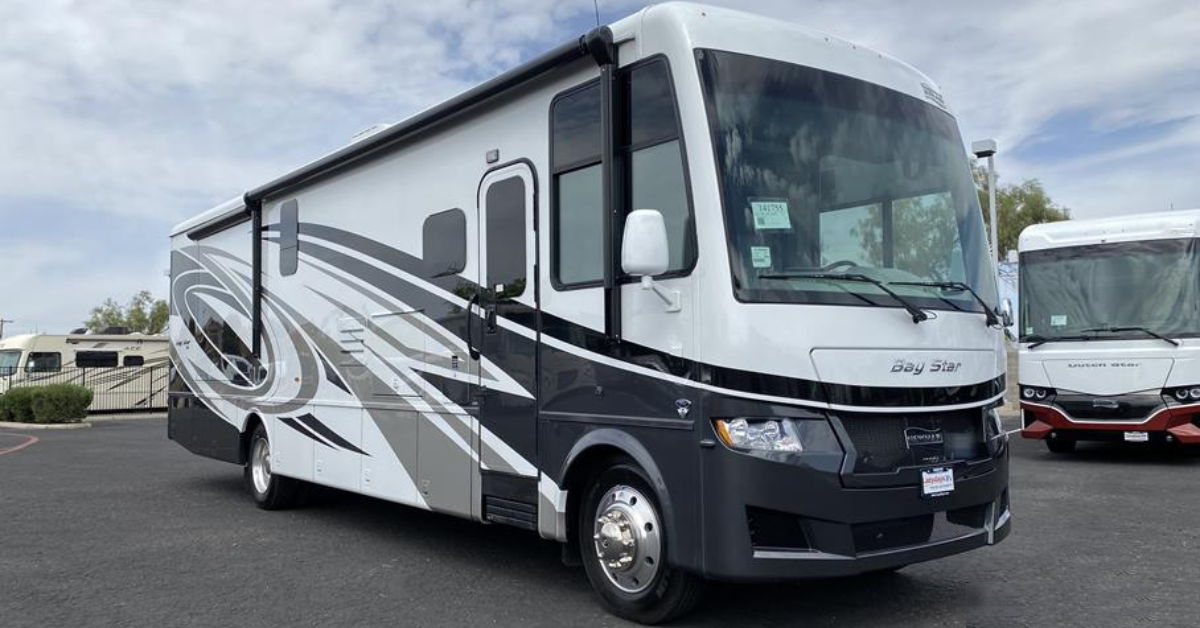When it comes to storing your RV, proper tire storage is essential to prevent RV tire dry rot and flat spots. RV tires are susceptible to damage caused by extended periods of inactivity, exposure to sunlight, and improper storage techniques. In this comprehensive guide, we will provide you with valuable tips and best practices to help you avoid RV tire dry rot and flat spots during storage. By following these guidelines, you can ensure the longevity and safety of your RV tires.
Certainly one quick way to protect your RV tires is by installing tire covers. Here’s a good video on that subject.
Understanding RV Tire Dry Rot and Flat Spots
RV tire dry rot refers to the cracking and deterioration of the rubber caused by exposure to UV rays, heat, and age. It weakens the structure of the RV tire and compromises its integrity, leading to potential blowouts and accidents. Flat spots on RV tires occur when they remain stationary in one position for an extended period, causing a section of the tire to develop a flat area. This can result in uneven wear, vibrations, and an uncomfortable ride.
1. Clean and Inspect Your RV Tires
Before storing your RV, thoroughly clean the tires using mild soap and water. Remove any dirt, debris, or chemicals that could accelerate the aging process or cause damage to the RV tires. After cleaning, conduct a visual inspection for any signs of RV tire dry rot, bulges, or uneven wear. Address any tire issues before storage to prevent further damage.
2. Inflate RV Tires to Recommended Pressure
Inflate your RV tires to the manufacturer’s recommended pressure before storing your vehicle. Proper inflation helps distribute the weight evenly, reducing the risk of RV tire flat spots and maintaining tire shape and integrity.
3. Choose the Right RV Tire Storage Location
Select a storage location that offers protection from sunlight and harsh weather conditions. Covered or indoor storage options are ideal for preventing UV exposure and minimizing temperature fluctuations that can contribute to RV tire dry rot and flat spots. If covered storage is not available, consider using RV tire covers to shield your tires from direct sunlight.
4. RV Tire Positioning
When parking your RV for storage, consider using leveling blocks or jack stands to take the weight off the tires. This helps alleviate pressure on specific spots and reduces the risk of RV tire flat spots. If using leveling blocks, place them under the axle rather than directly under the tires.
5. Regular RV Tire Rotation
Before storing your RV, rotate the tires to ensure even wear and minimize the occurrence of RV tire flat spots. This practice helps distribute the weight and prevents flat spots from forming in a stationary position. Follow the recommended RV tire rotation pattern specified by the tire manufacturer or consult a professional for guidance.
6. Exercise Your RV Tires
If possible, periodically move your RV during storage to prevent RV tire flat spots. Rolling the vehicle a short distance every few weeks can help distribute the weight and relieve stress on specific areas of the tires. Check with the storage facility guidelines and local regulations before moving your RV.
7. Monitor RV Tire Pressure
Regularly check the RV tire pressure during storage to ensure it remains within the manufacturer’s recommended range. Fluctuations in temperature can affect tire pressure, so it’s important to maintain proper inflation levels to prevent RV tire flat spots and damage.
8. Avoid Chemical Damage to RV Tires
Keep your RV tires away from petroleum-based products, solvents, and harsh chemicals. These substances can deteriorate the rubber compound, leading to premature RV tire aging and potential dry rot. Store cleaning agents and chemicals in a separate compartment to prevent accidental contact with the tires.
Conclusion – Avoid Tire Dry Rot and Flat Spots
Proper RV tire storage is crucial for avoiding RV tire dry rot and flat spots, which can compromise your safety on the road. By following these tips and best practices, you can maintain the integrity of your RV tires and extend their lifespan. Regular cleaning, proper inflation, choosing the right RV tire storage location, tire rotation, and periodic tire exercise are key to preventing RV tire damage during storage. Remember to monitor RV tire pressure and avoid chemical damage to ensure the longevity of your RV tires.
For other RV storage tips check out “21 RV Storage Tips: The Ultimate Guide to Keeping Your Rig in Top Condition”
